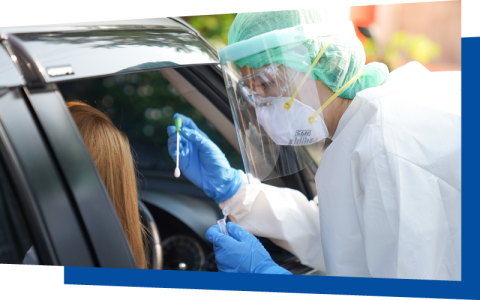COVID-19: Self-Testing
A COVID-19 self-test (also called an at-home test or over-the-counter test) is a type of COVID-19 test that you can take at home or anywhere. Self-tests are usually antigen tests. They are easy to use and produce rapid results. To obtain accurate results, follow all of the instructions included with your self-test.
While the Wisconsin Department of Health Services (DHS) does not currently supply free COVID-19 self-tests, they are widely available to purchase at pharmacies and retail stores.
When should I consider using a self-test?
You can use a self-test to help you make decisions that reduce your chances of spreading COVID-19. You can use a self-test regardless of vaccination status or symptoms. Self-tests detect current infection and cannot tell you if you were previously infected. You may consider using a self-test if you have symptoms of COVID-19, were exposed to COVID-19, or plan to gather indoors with others outside of your household.
- If you have symptoms and have access to a self-test, use it immediately.
- If you were exposed to someone with COVID-19, use a self-test at least five full days after your last exposure.
- If you are testing before a gathering, test immediately before the gathering or as close in time to the event as possible.
How can I get a self-test?
You can buy a self-test over-the-counter at a pharmacy or retail store.
Some private health insurers will reimburse the cost of purchasing self-tests. For a list of authorized self-tests, visit the Food and Drug Administration’s (FDA) website.
If you are not able to find a self-test when you need one, contact your local or tribal health department for help finding a test.
How do I use a self-test?
Follow the manufacturer’s instructions exactly to collect your specimen and perform the test. You should wash your hands with soap and water for at least 20 seconds before collecting your specimen. If you do not collect your specimen or perform the test as directed, your results may not be accurate.
What do my self-test results mean?
I tested positive with a self-test
If you test positive with a COVID-19 self-test, stay home, separate yourself from others, wear a well-fitting mask when around others. Contact a doctor about COVID-19 treatments if you are at higher risk for severe illness. Tell your close contacts that they have been exposed to COVID-19. If you think your positive test result may be incorrect, contact a doctor to determine whether more testing is necessary.
I tested negative with a self-test
If you test negative with a COVID-19 self-test, it means the virus that causes COVID-19 was not detected and you likely do not have COVID-19 at this time. If you test negative but have symptoms of a respiratory virus, take actions to help protect yourself and others from health risks caused by respiratory viruses.
If you took the self-test while you had symptoms and followed all instructions carefully, a negative result means your current illness may not be COVID-19. However, it does not rule out COVID-19 infection entirely. Sometimes people with COVID-19 get a false negative result. It is also possible to test negative if you took the test too early in your infection.
If you think your negative test result may be incorrect, you may consider taking another self-test 24 to 48 hours later, or getting a different viral test at a pharmacy or community testing site. Contact a doctor for help determining whether you should get a different COVID-19 test.
Learn more about testing
See basic information on other types of COVID-19 tests, including when to get tested, testing options, and what happens during and after a test.



